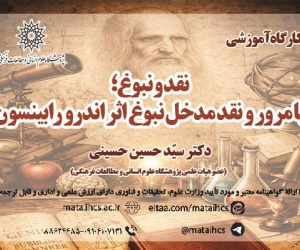Design and Evaluation of ' Music Educational Assistant ': a Web-Based Assistant for Enhanced Music Cognitive and Skill Learning During COVID-19 (مقاله علمی وزارت علوم)
درجه علمی: نشریه علمی (وزارت علوم)
آرشیو
چکیده
Learning musical instruments has been rapidly popular during the past decades. However, it is faced with COVID-19 pandemic restrictions and lockdowns, which limit face-to-face music lectures. This research aims to design and develop an online instructional system named Nuance for learning musical instruments. The system performance is tested and analyzed to study the impact of the proposed system on cognitive and practical learning skills for a Persian musical instrument named Setar. This study uses a "quasi-experimental research" method for a population of 900 Setar elementary students in Sanandaj city during the 2021-2022 academic year. A convenience sampling method is used to form two homogenous groups, including control and experimental, each with 15 learners. The experimental group uses the Nuance system, while the control group receives online videos. The Shapiro-Wilk test is used to test the data normality, while one-way ANOVA and Tukey post hoc tests are used to analyze data and study the performance of the proposed system. The results show a significant difference between both the groups and support that the proposed system has a better performance for cognitive and practical music learning skills than the standard online system (P <0.05).طراحی و ارزیابی "دستیار آموزشی موسیقی": دستیار مبتنی بر وب برای تقویت یادگیری موسیقی شناختی و مهارتی در طول COVID-19
خلاصه یادگیری آلات موسیقی در دهه های گذشته به سرعت رواج یافته است. با این حال، با محدودیت های همه گیر COVID-19 و قفل هایی مواجه است که سخنرانی های موسیقی چهره به چهره را محدود می کند. هدف این تحقیق طراحی و توسعه یک سیستم آموزشی آنلاین به نام Nuance برای یادگیری آلات موسیقی است. عملکرد سیستم برای بررسی تأثیر سیستم پیشنهادی بر مهارت های یادگیری شناختی و عملی یک ساز ایرانی به نام سه تار آزمایش و تحلیل می شود. این پژوهش با روش «پژوهشی نیمه تجربی» برای جمعیت 900 نفری دانش آموزان سه تار ابتدایی شهر سنندج در سال تحصیلی 91-90 انجام شد. از روش نمونه گیری در دسترس برای تشکیل دو گروه همگن، شامل کنترل و آزمایش، هر کدام با 15 یادگیرنده استفاده می شود. گروه آزمایش از سیستم Nuance استفاده می کند، در حالی که گروه کنترل فیلم های آنلاین را دریافت می کند. از آزمون Shapiro-Wilk برای تست نرمال بودن داده ها استفاده می شود، در حالی که از آزمون های ANOVA یک طرفه و آزمون تعقیبی Tukey برای تجزیه و تحلیل داده ها و مطالعه عملکرد سیستم پیشنهادی استفاده می شود. نتایج نشان می دهد که بین هر دو گروه تفاوت معنی داری وجود دارد و پشتیبانی می کند که سیستم پیشنهادی عملکرد بهتری برای مهارت های یادگیری موسیقی شناختی و عملی نسبت به سیستم آنلاین استاندارد دارد (۰۵/۰P<).
COVID-19 ،آموزش موسیقی ،سیستم آموزشی آنلاین ،سه تار،









